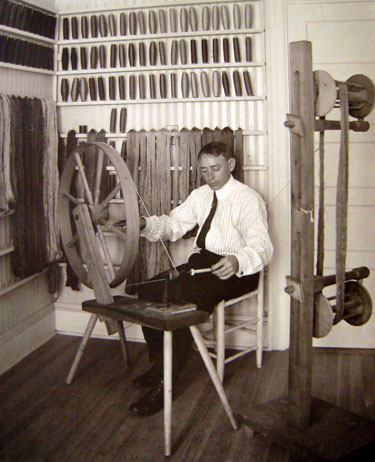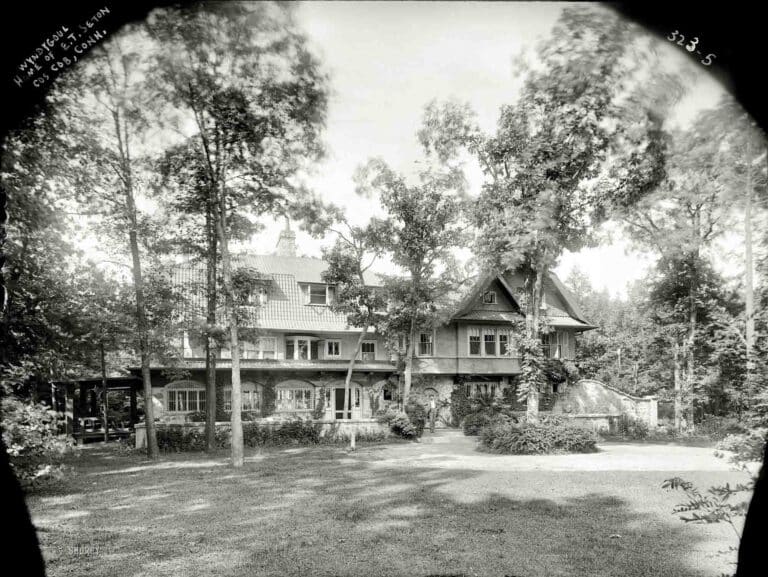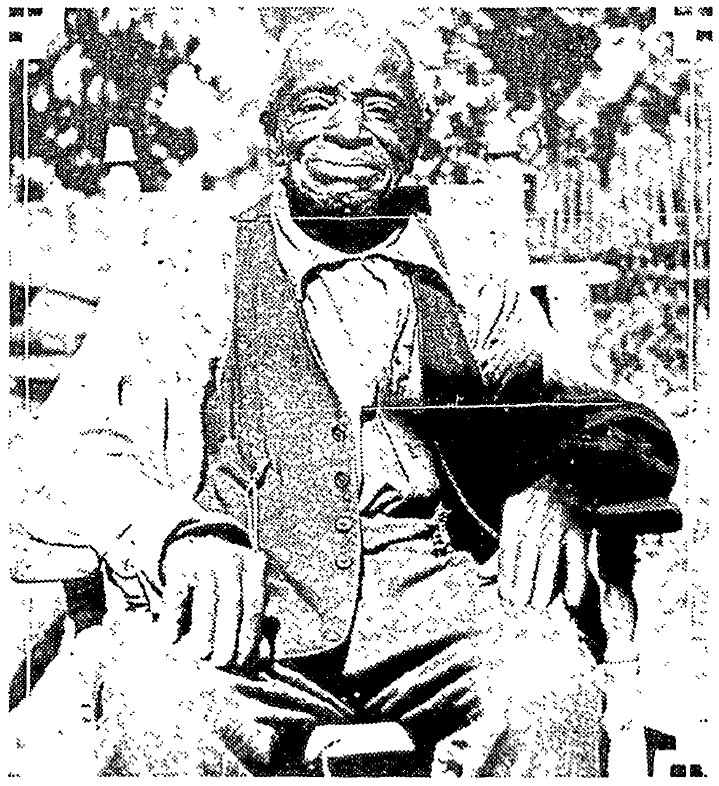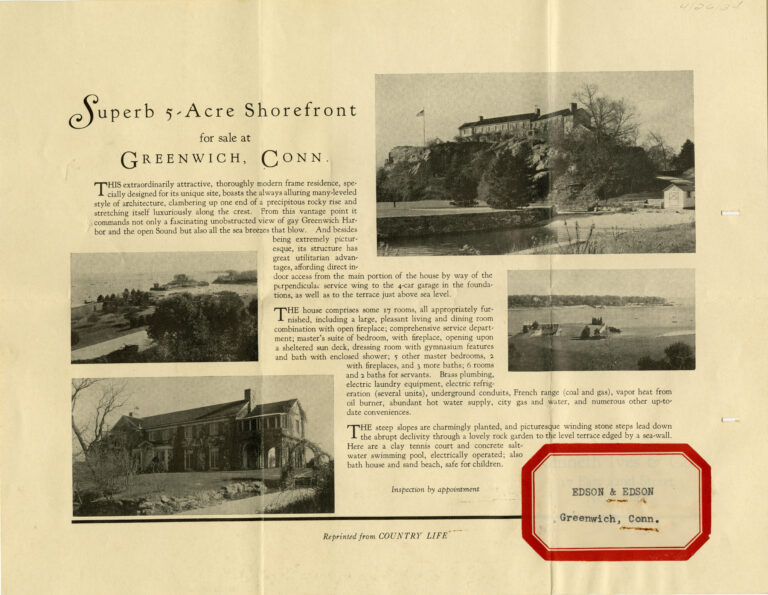Mr. and Mrs. Francis Bailey Vanderhoef originally became interested in weaving as a hobby and became so involved in the process that Mr. Vanderhoef constructed his own loom at their home “Wishing Woods” on Husted Lane. Mrs. Vanderhoef created her earliest pieces on this loom, and they were of such quality that they attracted great interest. Unable to meet the growing demand on her own, Mrs. Vanderhoef moved her burgeoning new business to larger office space and hired skilled European craftsmen to assist in production. In short order even this new space proved inadequate, so the Vanderhoef’s purchased a cottage on the Post Road to house a workshop.
According to a 1916 article about the workshop, Mrs. Vanderhoef wanted to establish “a kind of Golden Age for craftsmen where working people may lead happy lives and enrich the world by the product of beautiful objects under the most liberal conditions.”
In addition to European specialists, the intent was apparently to employ talented people from the Greenwich community. An associate of the family indicates that Mrs. Vanderhoef wanted to train polio survivors who had compromised leg strength to weave tapestries on a loom where this condition would not hinder their efforts.
The workshop also performed skilled repair and restoration work on old tapestries. The material used in the new and repaired tapestries was colored using dyes, many of which were also prepared on site. Since the tapestries were often composed of multiple types of fiber, it was a great challenge to get the same color to reproduce faithfully on each.
Thanks to a recent donation, the Archives at the Greenwich Historical Society holds vintage photographs of the Vanderhoef Tapestry workshop that illustrated the article mentioned previously. The archives are open to the public on Wednesdays from 10 a.m. to 12:30 p.m. and 1 p.m. to 4 p.m.





